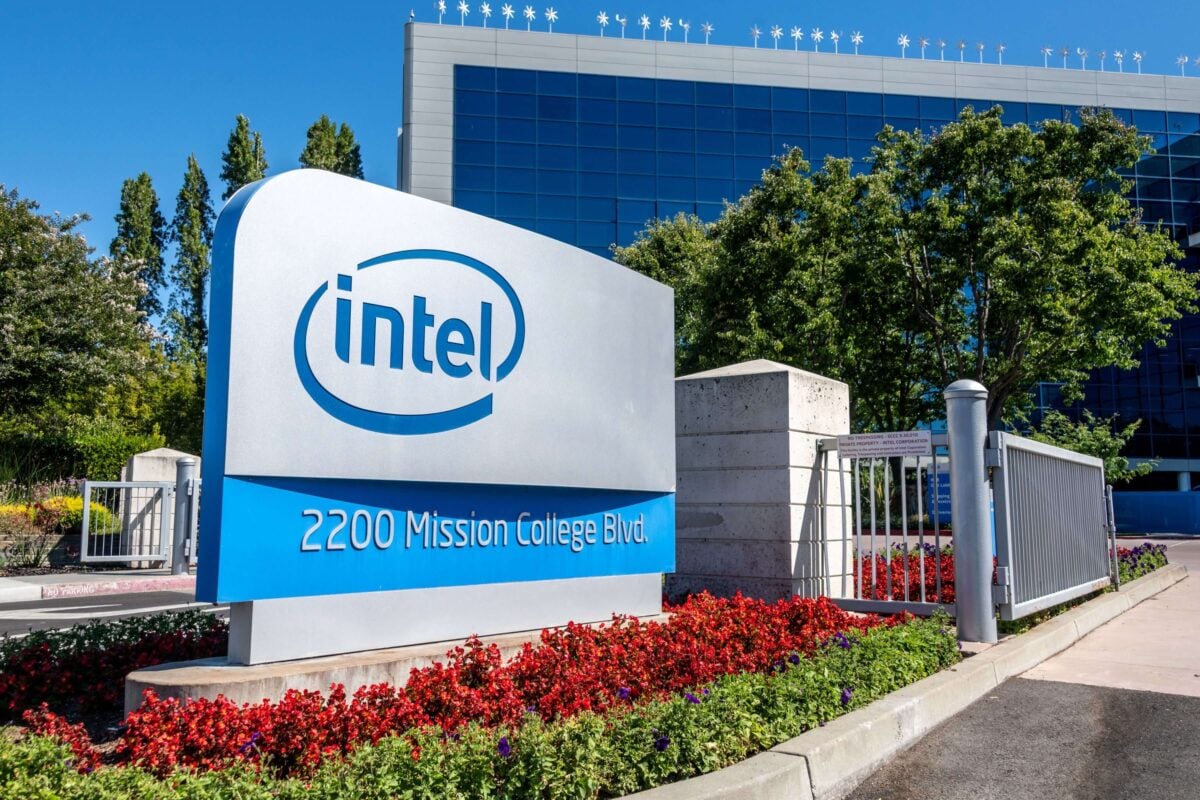TLDR
- Intel reported Q3 revenue of $13.7 billion, beating analyst expectations of $13.15 billion, with adjusted earnings per share of $0.23 versus the projected $0.01.
- The U.S. government became Intel’s largest shareholder with a 10% stake through an $8.9 billion investment in August 2025, part of a strategy to restore domestic semiconductor production.
- Intel received major investments from Nvidia ($5 billion for a 4% stake) and SoftBank, providing financial support for the company’s turnaround efforts.
- CEO Lip-Bu Tan has cut Intel’s workforce by over 20%, reducing headcount from 124,100 to 88,400 employees year-over-year as part of cost-cutting measures.
- Intel Foundry Services posted an operating loss of $2.3 billion in Q3, with the company shifting focus from its 18A manufacturing process to the next-generation 14A process to attract outside customers.
Intel stock jumped more than 7% in premarket trading Friday after the company delivered third-quarter results that topped Wall Street forecasts. The chipmaker posted revenue of $13.7 billion for the three months ended September 27.
Analysts had expected $13.15 billion. Intel reported adjusted earnings per share of $0.23, crushing the $0.01 consensus estimate.
This is Intel’s first earnings report since the U.S. government became its largest shareholder. The Trump administration negotiated an $8.9 billion investment in August 2025, purchasing 433.3 million shares at $20.47 each for a 10% stake.
Intel received $5.7 billion from the government during the third quarter. The company took a per-share loss of 37 cents to account for shares held in escrow that will be released to the government.
CEO Lip-Bu Tan said in a statement that AI is accelerating demand for compute across Intel’s portfolio. This includes both the company’s struggling manufacturing business and its product lines.
Intel makes CPUs that work alongside AI chips in data center servers. These traditional computer chips help power artificial intelligence software and are also used in AI PCs.
The company reported net income of $4.1 billion, or 90 cents per share. This compares to a net loss of $16.6 billion in the same quarter last year.
Intel’s stock has rebounded more than 90% in 2025. The gains outpaced both Nvidia and AMD during the same period.
New Investments Provide Financial Support
Intel secured a $5 billion investment from Nvidia in September 2025. The deal gives Nvidia a 4% ownership stake and includes integrating Intel’s processors alongside Nvidia’s AI graphics chips.
SoftBank also invested in Intel during this period. These investments, combined with the government stake, have strengthened Intel’s balance sheet.
John Pitzer, Intel’s head of investor relations, told Yahoo Finance the company believes it’s well-positioned to play a bigger role in AI. The investments have boosted investor hopes for a turnaround under Tan’s leadership.
However, analysts remain cautious. Bernstein warned the turnaround is far from over and suggested it might be better to call it a draw rather than claiming victory.
Intel trades at a 12-month forward price-to-earnings ratio of 71.51. That’s higher than Nvidia’s 30.49 and AMD’s 40.14.
Intel’s Client Computing Group generated $8.5 billion in sales. Data center CPUs brought in $4.1 billion, down 1% year-over-year.
The company reported that demand for its chips is outpacing supply. The trend is particularly strong in data centers where operators are upgrading CPUs to support AI workloads.
Manufacturing Business Faces Hurdles
Intel Foundry Services, the company’s third-party manufacturing arm, reported an operating loss of $2.3 billion for the third quarter. That’s wider than the $2.2 billion expected but better than last year’s $5.8 billion loss.
The foundry division generated $4.2 billion in sales during the quarter, down 2% annually. Intel opened this business to outside customers in 2021 after previously manufacturing only its own chips.
Wall Street worries that heavy spending on the foundry segment may not pay off. The business has failed to attract major commitments from outside customers so far.
Intel is no longer promoting its 18A chip production process to attract outside customers. Initial reports indicated both Nvidia and Broadcom were testing the technology, but deals failed to materialize.
The company has shifted to primarily using 18A for its own internal products. These include its Core Ultra series 3 chips for consumers and its Xeon 6+ data center chip, slated to launch in the first half of 2026.
Finance chief Dave Zinsner cautioned that yields for the 18A manufacturing process remain below industry standards. They won’t reach acceptable levels until 2027.
Intel is now focusing on attracting customers through its next-generation 14A manufacturing process. Pitzer told Yahoo Finance the company is pleased with early customer feedback on 14A.
He said Intel is ahead of where it was at a similar point in the 18A development. The foundry division requires $100 billion in capital investment but hasn’t yet secured a major customer outside Intel itself.
Ben Bajarin, CEO of Creative Strategies, said Intel’s results show cautious optimism. Looking ahead, all eyes are on the foundry business.
Tan has implemented aggressive cost-cutting measures since taking over. The company has reduced its workforce by more than 20%, dropping from 124,100 employees to 88,400 year-over-year.
The CEO sold a majority stake in Intel’s Altera subsidiary. He has shifted the company’s capital strategy to rely more on external commitments rather than heavy internal spending.
Intel expects fourth-quarter adjusted EPS of $0.08, less than the $0.10 per share estimated by analysts. The chipmaker forecasts revenue of $13.3 billion at the midpoint of its projected range, below the $13.4 billion expected.
Intel said its fourth-quarter guidance came in below analyst estimates because projections don’t include revenue from Altera. Intel started production of its most advanced chips in Arizona during the quarter.






